
A lot of what I do all day long is think about how to explain product management, outcomes, and processes to other people. Inherently, product adoption strategy is part of that as well.
It’s a bit meta to say I work at a product company, building a product for product people, and I’m also in product myself — but hey, it works!
I thought I’d write some of what I’ve learned around product adoption strategy in the last few years (and if you missed it, I also did a talk about this for Product-Led Summit!)
TL;DR
Product strategy is what you aim to achieve, why it's important, and how you'll measure success to reduce business risk.
Product adoption is a measurable objective for the entire team to work towards, not just a one-off task.
Understanding customer journey, user and buyer personals and experimenting with ideas and solutions is essentials for crafting a successful adoption strategy.
Effective user onboarding is essential for product adoption; it guides users through learning the product and reduces future support needs.
Onboarding best practices include personalizing experiences, using progressive steps, conducting A/B testing, and continuously analyzing data to improve.
Track retention rate, engagement rate, onboarding completion rate, time to value, feature adoption rate, conversion rate, and usage frequency to measure success and make informed decisions.
What is product strategy anyway?
Before we even get started talking about how to create a product adoption strategy for your product or service, let’s take a step back first and define what product strategy even is.
There have been a lot of amazing content about different ways of achieving retention, increasing adoption, and defining a great onboarding experience — but these are all outputs that happen as a result of strategy.
So if you’re planning on implementing any of these potential frameworks, you need to first answer the following:
What are you hoping to achieve?
Why are you doing any of it?
How will you measure success?
And that is what product strategy is.
(You can download airfocus's eBook on product strategy to get a full understanding of it, with examples and guides)
It’s about taking a step back from all these different outputs and really digging down into understanding if what you want to do is worth doing, why, and how you will measure that success.
In other words, what you’re doing is deflecting the risk of business failure by defining this before you spend the time doing it.
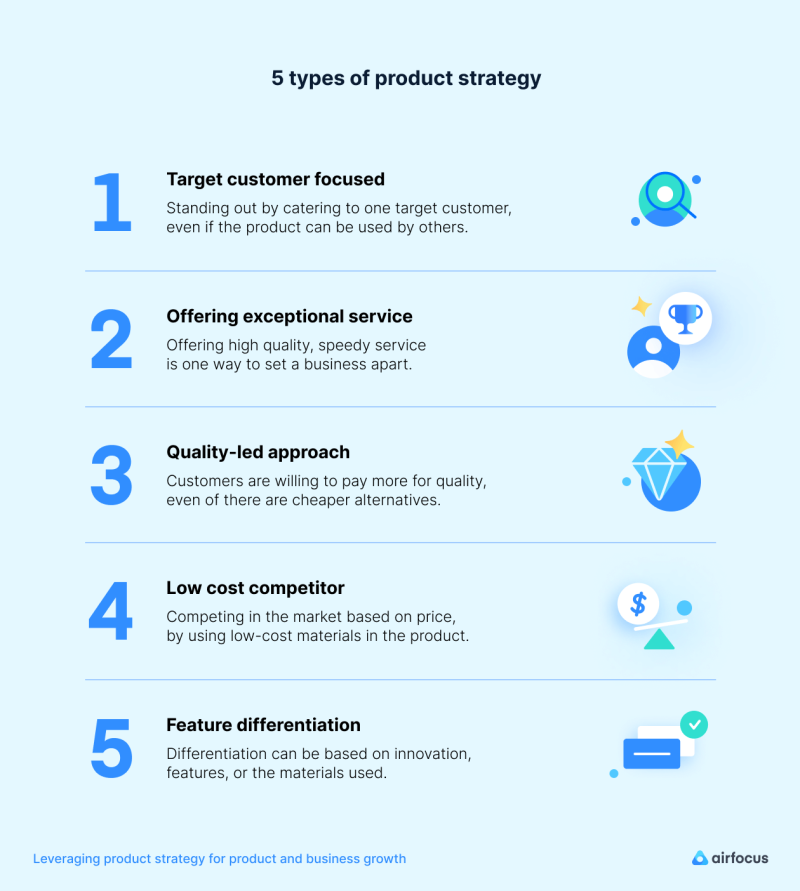
Product adoption as an objective
With all of this in mind, you can convert the idea of ‘product adoption’ into an objective your team can meet — and by making it quantifiable and measurable, you’re then able to define success.
Product adoption then becomes an objective.
With product adoption as your north star objective, your entire team can now work towards it together.
Why is this important?
Product adoption is not a one-off situation
It happens at various points in the customer journey, and therefore not something that realistically only a single team is responsible for achieving.
This objective may be broken down into potential sub-objectives that will also have some key results that will allow you to measure progress.
For example, you might have the following setup:
Company objective: Increase Product Adoption
Product objective: Improve Onboarding Experience
Key result: Increase sign ups by 10%
This rolls up the product objective to the company objective with a measureable key result.
Define the customer journey
Now that we’ve set our north star objective, our next step is to understand and map out the customer journey.
There is no one-size fits all, disclaimer alert.
This will vary based on your particular product or service, but here’s an example of what that customer journey might look like:
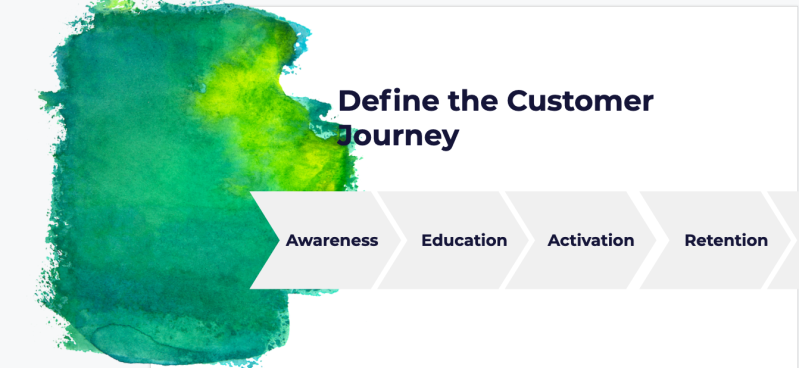
Awareness
You first have an initial awareness phase, where the user is just learning about your brand.
Education
Then they may start a trial and start the education phase. This is where they’ll be learning about the benefits and services your product offers.
Activation
Next comes the trial conversion into activation when they become a customer.
Retention
The retention phase is their ongoing relationship with you, as they look to possibly renew their subscription with your product.
Product adoption happens on every single one of these phases.
When you think about this in the larger scheme of things, the first few phases are likely going to be led by your sales and marketing teams (this does not mean they are sales-led, by the way, just that the initiatives will be led by those teams!) while the later phases are more likely to be tackled by your product and success teams.
This is why increasing product adoption is an objective, so everyone knows how their work will have an impact.
Define buyer and user personas
Before you get into applying different methods of getting people to adopt your product, you need to add an extra layer on this, which are your user persona and buyer personas.
Every user’s journey to your product is going to be different.
You may be dealing with an advocate that has no power in making a purchasing decision, just like you may be dealing with someone who is making the purchasing decision but doesn’t really understand why they’re buying in the first place.
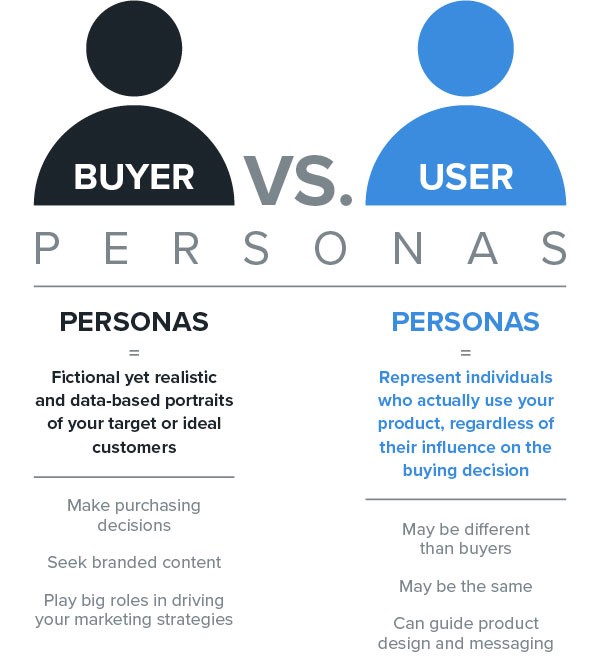
It’s important to cater to different types of user and buyer personas to make that transition from awareness to education to activation a lot easier.
The role of experimentation
Now that you have your objectives, understood what and why you are looking to do, and defined who you are doing it for, it’s time to tap into my personal favorite part of product management — discovery and experimentation.
There are a myriad of ways of outlining different experiments you might run. My favourite one is to use Teresa Torres’ Opportunity Solution Tree.
This framework allows you to look at all possible experiments with the view that there is no such thing as a ‘bad’ idea, just potential ideas and opportunities that will give you a desired outcome.
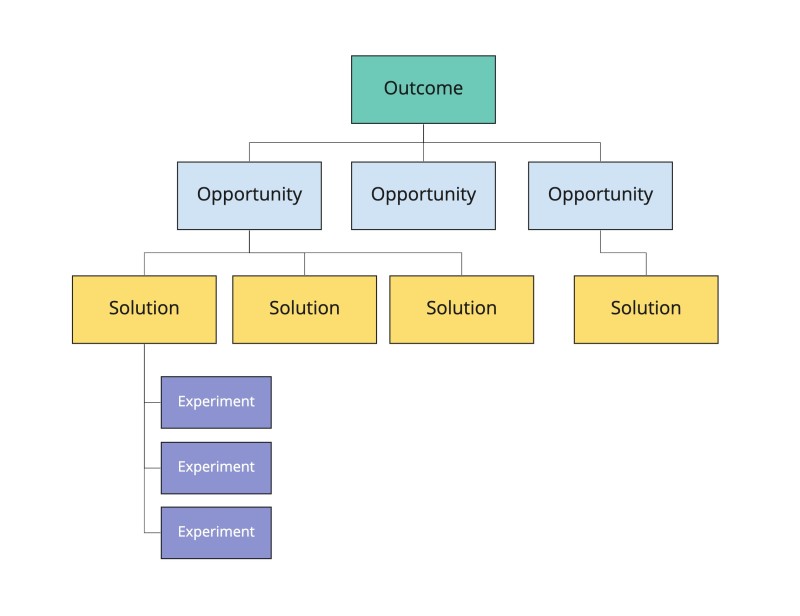
(source: https://www.joerinaldijohnson.com/posts/a-guide-to-using-opportunity-solution-trees-for-product-discovery) The Opportunity Solution Tree can then be translated into an outcome-based roadmap that helps you focus on solving the right problems.
Building an outcome-based roadmap
Unlike the old school way of creating roadmaps that are feature-based and time-based, this type of roadmap focuses on aligning potential projects (initiatives) to objectives.
At the very beginning I talked about the different aspects of a strategy: what, why, and how you will measure success.
Below is an example of how to achieve that (in this case, set up with airfocus)
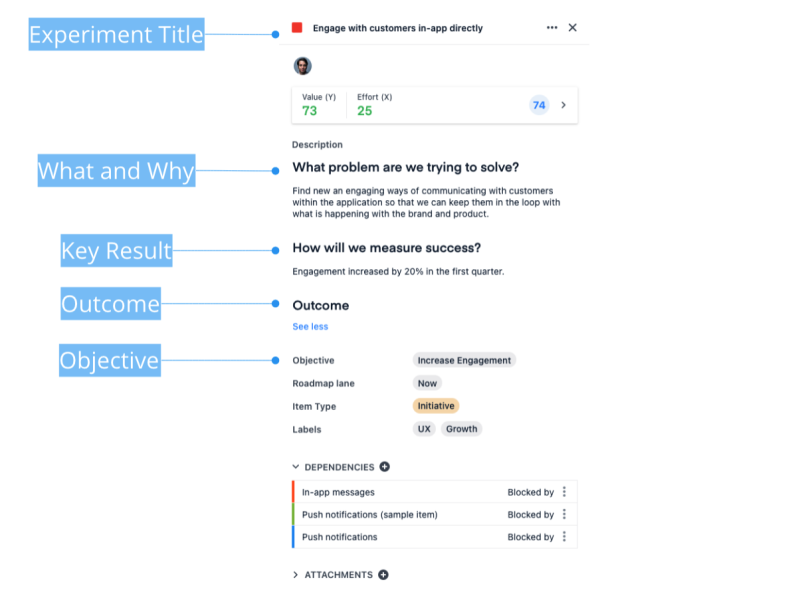
With every experiment you might choose to run, you’re keeping in mind what step of the customer journey it is impacting as well as who the user or buyer personas involved are.
Remember that a roadmap is not just for the product team, and you can set the same structure for your sales, success and marketing teams.
And because all groups are working together towards what are hopefully the same set of objectives, even though you might have different roadmaps, you’re still aiming to impact and achieve the same thing.
And with that we’ve mapped out a solid product adoption strategy. 🎉🎉
Set up your north star objective to increase product adoption.
Map out sub-group objectives as necessary
Set key results for each objective so you know how work will have an impact.
Always keep in mind what, why, and who you are doing things for.
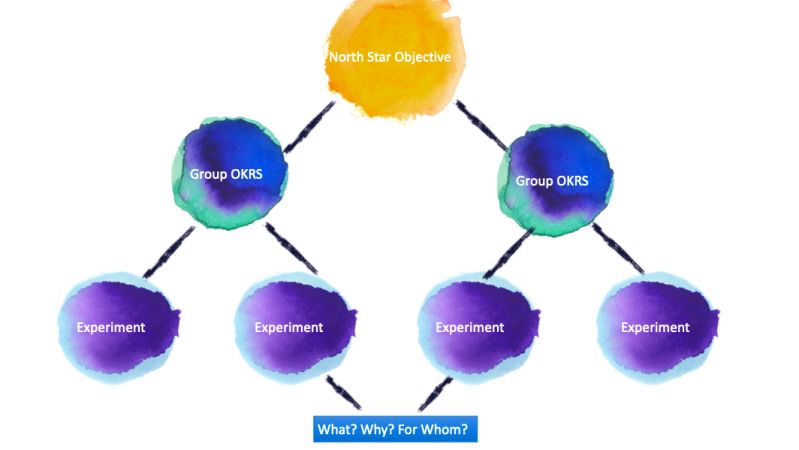
The role of user onboarding in product adoption
User onboarding plays a major role in product adoption — here’s what you need to know.
Why is user onboarding important for product adoption?
User onboarding is essential for product adoption as it guides newcomers through the critical process of learning how to use your app. It introduces functions and features they need to know about upfront instead of leaving users to stumble on them later.
Additionally, onboarding helps individuals use your product to complete their jobs to be done (JTBD). They can learn how to complete tasks and navigate the product faster.
Good user onboarding helps you deliver that all-important positive user experience from the start, and it presents a great opportunity to show users the value of your product immediately. That can help boost user engagement and improve product adoption overall.
Another benefit of good user onboarding is that it reduces the need for customer support down the line. When you guide new users through your product and show them how to get the best from it, they’re less likely to contact support with issues they can solve themselves.

User onboarding best practices for better product adoption
Let’s explore a few best practices to improve product adoption onboarding.
Embrace personalization
Personalization is one of the most essential parts of a good user onboarding process. Tailor the experience for each persona at every stage of onboarding.
To do this right, you need to create accurate user personas based on in-depth research into your different user segments. Consider what they expect to find when they start using a product and what will make the best first impression.
Go for a progressive approach
Set up a progressive user onboarding process to make sure you only show people the features and instructions that are relevant to them. A progressive process follows the user’s actions — each step depends on the previous one. This means you’ll introduce new parts of your product to a user gradually as they explore and become more engaged.
Subjecting them to an exhaustive tour of areas they’ll never use will bore them and might inspire them to look elsewhere.
Try A/B testing on different onboarding experiences
Using A/B testing, you can explore multiple onboarding experiences and identify the best points from each. This will help you gradually create a more engaging experience.
Collect and review data to improve onboarding
Gather data on user behavior and general usage to identify issues that people may have with your product. Data analysis can help you consistently improve your onboarding experience.
What are some key metrics and KPIs for product adoption?
Here are seven helpful product adoption metrics and KPIs to measure your user onboarding.
Retention rate
Retention rate refers to the number of users you retain within a specific period. There’s a simple formula to calculate your retention rate:
Subtract the number of new users gained during the period from the number of users remaining at the end
Divide the result of that by the number of users at the start
Then multiply by 100
![hire a product manager - analytics]()
Engagement rate
Engagement rate refers to how many people use your product during a selected period. This is one of the most important product adoption KPIs to measure regularly.
Onboarding completion rate
This represents how many users completed the onboarding process. Tracking your onboarding completion rate reveals how successfully your onboarding cultivates product adoption.
Time to value
Time to value represents how long it takes a user to realize the value of your product.
Feature adoption rate
Feature adoption rate measures the number of people who use a feature and how often.
Conversion rate
Conversion rate measures the number of people who discover your product and how many become users.
Usage frequency
Track usage frequency to measure how regularly users return to your product, which shows how much (or how little) value it offers.
The original article was published in August of 2021. Last updated in June 2024.

Andrea Saez

Read also

Create effective product strategy

Experience the new way of doing product management






